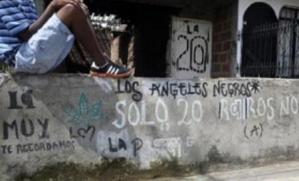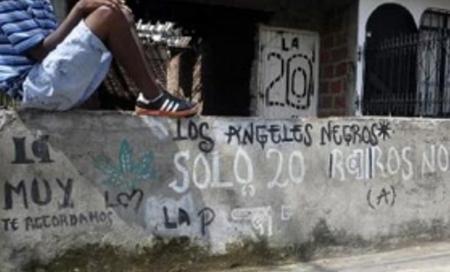An official report highlights the startling explosion of youth gangs in the city of Cali, Colombia, feeding the conflict between rival criminal groups the Urabeños and the Rastrojos.
 According to a report issued by the Cali Ombudsman’s Office, the number of armed teenage gangs identified by the authorities rocketed from 10 in 1992 to 134 in 2012, a more than 13-fold increase. The last three years alone have seen 30 new groups spring up.
According to a report issued by the Cali Ombudsman’s Office, the number of armed teenage gangs identified by the authorities rocketed from 10 in 1992 to 134 in 2012, a more than 13-fold increase. The last three years alone have seen 30 new groups spring up.
Over 2,000 adolescents are now involved in gangs, which commit some 13 percent of murders in the city. They are also involved in drug dealing (microtrafficking), car theft and burglary, and generate internal displacement within the city, as well as constant casual violence.
The report stated that of the 134 gangs, 66 are contracted by neo-paramilitary group the Urabeños or their drug cartel rivals the Rastrojos, who have been fighting a bitter turf war since the Urabeños first moved into the Valle del Cauca region in 2011.
It should come as no surprise that the Urabeños and the Rastrojos are recruiting from the ranks of teenage gangs –- a time-tested method for large drug trafficking organizations in Colombia.
As the report notes, “The gangs serve as a source of cheap labor, easily accessible and, above all, disposable.”
The gang members’ status as minors, far from acting as a hindrance to recruitment, is actually a bonus for criminal groups, due to the difficulties of prosecuting and incarcerating minors, who in Colombia can only be sent to low-security detention centers and not prisons.
For the gang members, associating with powerful international criminal organizations is a badge of honor that elevates their status among their peers. Many of the youths are willing to take big risks in exchange, making them ideal for the sort of dangerous and violent tasks required by mafias embroiled in a turf war.
It is no coincidence the number of these gangs has rocketed in the era of large scale drug cartels in the city, beginning with the Cali Cartel, then the Norte del Valle Cartel, and now the feuding Rastrojos and Urabeños. The combination of poverty and lack of opportunities with the huge sums of money available from drug trafficking have created fertile terrain for organized crime, allowing criminal groups to use the city’s youth as disposable soldiers.

